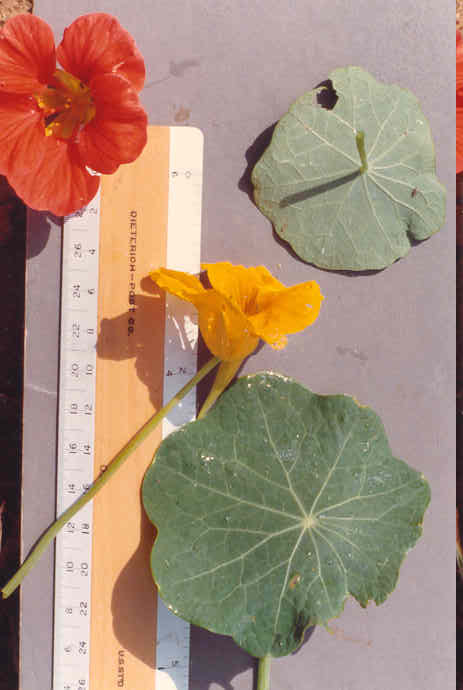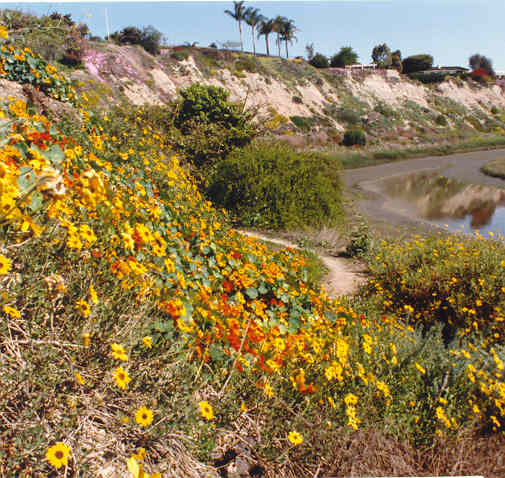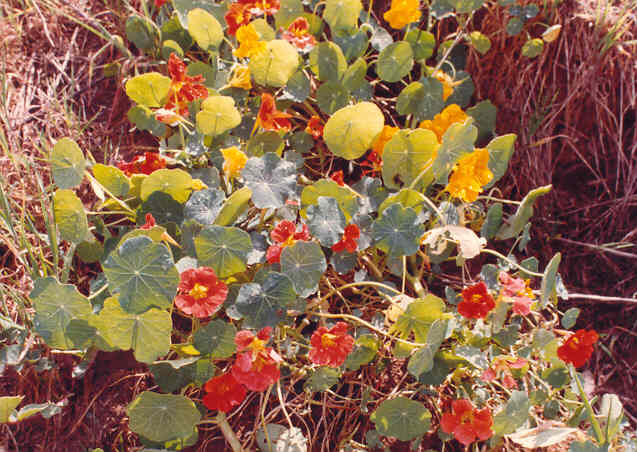
Tropaeolum majus L.
 |
Tropaeolum majus L.
Tropaeolaceae (Tropaeolum Family)South AmericaGarden Nasturtium |
March Photo
Plant Characteristics:
Annual or of longer duration, dwarf or climbing; lvs. alternate, peltate,
4-15 cm. wide, ca. 9-nerved; fls. solitary, axillary, very irregular, usually
showy, yellow, red, etc., 3-6 cm. wide; sepals 5, one produced into a
spur 2-4 cm. long; petals 5,
rarely fewer, clawed , the 2 upper unlike the others; stamens 8, free, apical;
stigmas 3, linear; fr. of 3 indehiscent 1-seeded carpels which separate from
cent. axis when mature.
Habitat:
Occasionally escaping and establishing itself in gullies, on bluffs,
etc., along the immediate coast. Fls.
most of the year.
Name:
Greek, trophy, from the childlike lvs.
(Munz, Flora So. Calif. 845).
Latin, majus, great, large. (Jaeger 148).
Or in comparative degree, larger as contrasted to T. minus.
(John Johnson). The species name refers to either the large leaves or
flowers, it is not clear which.
General:
Occasional in the study area. Found
near the top of the bluff at the north end of Eastbluff and there is a large
colony in Big Canyon. Photographed
at the north end of Eastbluff. (my
comments). The
flowers and leaves can be mixed into salads; seed pods can be used as a
substitute for capers. They have a
peppery flavor similar to mustard. Nasturtium
was used in the vegetable gardens of England as early as 1726 and in Europe in
1574. (Clarke 244). Young foliage and flower petals add flavor
and aroma to soups, salads and canapes. Seeds
are used to season mixed pickles. (Meyer
183). A
single genus with about 50 species of Latin Am.
(Munz, Flora So. Calif. 845).
Text Ref:
Hickman, Ed. 1081; Munz, Calif. Flora 151; Munz, Flora So.
Calif. 845; Roberts 40.
Photo Ref:
Mar 1 84 # 23,24; April-May 91 # 30.
Identity: by R. De Ruff.
First Found: March 1984.
Computer Ref: Plant Data 287.
No plant specimen.
Last edit 11/08/2004
 |
 |